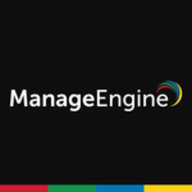

ManageEngine ServiceDesk Plus focuses on IT service management, and Sendbird enhances customer communication. Sendbird is noted for its advanced features, while ManageEngine ServiceDesk Plus stands out for its pricing and support, offering good value.
Features: ManageEngine ServiceDesk Plus offers comprehensive IT service management with asset management, incident tracking, and seamless integration with IT environments. Its ease of use and ITIL alignment are key strengths. Sendbird excels in advanced messaging features, robust API integrations, and supports rich media solutions, making it ideal for businesses demanding flexible and powerful communication tools.
Room for Improvement: ManageEngine ServiceDesk Plus could enhance its dashboard customization and some of its advanced reporting capabilities. Users seek more integration options with third-party tools. Broader multi-language support would also be beneficial. Sendbird, while offering robust features, can improve in providing more detailed usage analytics, enhancing admin controls, and expanding support for diverse media file types to enrich communication further.
Ease of Deployment and Customer Service: ManageEngine ServiceDesk Plus is praised for its straightforward implementation, aided by extensive documentation and support. It is highly accessible for IT departments. Sendbird adopts a rapid deployment model, making it easy for developers to integrate communication features efficiently. Sendbird's support focuses on developer resources, catering to its primary user base of developers and tech-savvy professionals.
Pricing and ROI: ManageEngine ServiceDesk Plus is economically attractive, with lower setup costs conducive to IT departments seeking efficiency. Its ROI is delivered through improved operational effectiveness. Sendbird may involve higher initial costs due to its focus on enhancing user engagement, appealing to businesses that prioritize advanced communication methods for ROI. Each product’s financial model aligns with its strategic focus, one on IT efficiency and the other on communication engagement.
ManageEngine has been particularly beneficial for small and medium-sized businesses in terms of value for money since they receive similar service at a lower cost compared to ServiceNow.
The ManageEngine technical support team deserves a rating of ten out of ten because we receive up-to-date support.
We have never needed to escalate any issues.
Their response time could be quicker.
It is trickier to expand across endpoints with Help Desk.
The tool is suitable for medium to large-scale operations and can be used effectively by mid-size companies.
Scaling ManageEngine ServiceDesk Plus is easy, and I would rate its scalability as nine out of ten.
The scalability is quite effective.
We have not experienced any significant issues.
We have not faced any stability issues or challenges with this tool.
Sendbird works well overall, the stability is sometimes affected by chat lists being randomly ordered rather than in chronological order.
There could be improvements in licensing flexibility, like the ability to use a single license for multiple users simultaneously.
It would be beneficial to have an option to assign approvals to a user group or a variable.
They might consider creating a bundled ERP solution for all these tools where purchasing one license would enable access to all functionalities.
The documentation for integrating with the Flutter framework is lacking detailed information.
The cost of ManageEngine is more affordable, making it viable for small to medium-sized businesses.
The costing for ManageEngine ServiceDesk Plus is very flexible and is considered low-priced.
It is not as expensive as ServiceNow, which has a very high cost.
The subscription cost is quite high, which prevents us from subscribing before the project completion and user testing.
The automation features in ManageEngine ServiceDesk Plus are what I like the most, particularly the business rules and customization capabilities.
All the services and critical functions we need are in one tool.
It provides a simpler and more intuitive interface for creating semi-automated use cases and managing problem solutions.
Features similar to WhatsApp, such as online and offline statuses, message reactions, and replies, add significant value.
| Product | Market Share (%) |
|---|---|
| ManageEngine ServiceDesk Plus | 5.1% |
| Sendbird | 0.5% |
| Other | 94.4% |


| Company Size | Count |
|---|---|
| Small Business | 31 |
| Midsize Enterprise | 24 |
| Large Enterprise | 19 |
| Company Size | Count |
|---|---|
| Small Business | 4 |
| Midsize Enterprise | 4 |
ManageEngine ServiceDesk Plus (MSP) is a comprehensive help desk tool that has built-in asset and project management. MSP can be deployed in the cloud or on premises. The solution enables its users to track configuration changes, map relationships, and view graphical displays of data for more informed decision making.
The two main focus points of MSP are IT request tracking and asset management. MSP’s integrated centralized management console enables technicians and system administrators to efficiently resolve complex issues and keep track of their organization’s needs and ensure constant availability.
With MSP's automation of multiple service desk processes, you can easily save time by automating repetitive and simple tasks such as task assignment, notifications, and categorizations. The automation of multiple processes helps reduce errors and lower costs while ensuring a fast turnaround of ticket handling processes.
ManageEngine ServiceDesk Plus Features and Benefits
MSP has a wide variety of features to help you optimize your help desk management:
Reviews from Real Users
MSP stands out among its competitors for a number of reasons. Two major ones are its comprehensive workflow management toolset and the flexibility it offers its users.
Mykola S., head of global IT delivery at Acino Pharma AG, writes, “CMDB as a baseline, incident management, service request management, and license management are valuable features. It offers really interesting features for complete use in an enterprise. You have one platform, and you could set up different service functions for HR, engineering, or another team in the same platform.
Sendbird offers scalable, API-driven chat features tailored for real-time messaging, supporting ease of integration and robust developer tools.
Sendbird is known for its scalability in managing extensive chat groups and API-based operations, complemented by an effective developer portal. It offers real-time messaging with features like file transfer, receipt IDs, typing indicators, and message reactions, all enhancing communication. The platform optimizes reliability through metadata and online/offline messaging capabilities. However, users experience challenges with SDK connection delays, URL thumbnail generation, and message display, particularly during version transitions. Concerns about pricing, support, and documentation quality, as well as the absence of audio/video calls and analytics tools, are mentioned.
What are Sendbird's most noteworthy features?Sendbird is implemented across industries for chat functionality. In travel, it connects users with flight attendants; in business, it facilitates customer interactions. Healthcare utilizes it for patient-doctor consultations. Social media and real-time applications employ it for chats and video calls, optimizing communication in mobile apps and enhancing user and business interactions in salon applications.
We monitor all Help Desk Software reviews to prevent fraudulent reviews and keep review quality high. We do not post reviews by company employees or direct competitors. We validate each review for authenticity via cross-reference with LinkedIn, and personal follow-up with the reviewer when necessary.